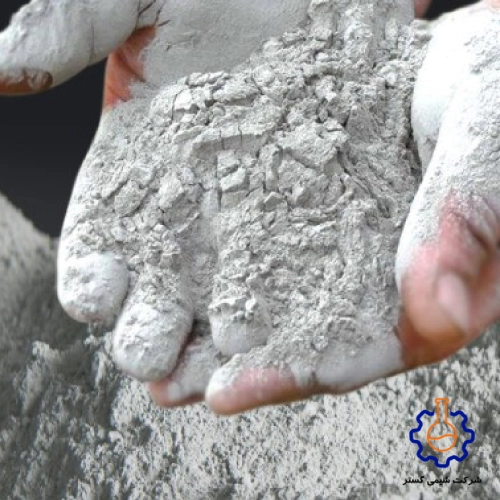Sorel cement
In the previous article, we discussed the applications of magnesium chloride. As mentioned earlier, magnesium chloride is used in the Cement industry. In the following, we would like to get acquainted with the characteristics and structure of magnesium chloride cement.
This cement was produced for the first time by a French chemist named Stanislas Sorel and was named Sorel cement in honor of this scientist, but it is also known by other names such as magnesia cement or magnesium oxychloride (MOC).
Property
Among the properties that can be stated for this type of Cement are fire resistance, lower thermal conductivity and greater resistance to wear. Some of these features are more than Portland cement. This cement can have strong bonds with minerals and non-mineral materials such as soil and other such things.
The main phases of bonds found in cement paste
Mg)OH)2, 5Mg(OH)2.MgCl2.8H2O (5 form)
3Mg(OH)2.MgCl2.8H2O (3 form)
5-form phase form with better mechanical properties. Using the molar ratio of MgO:MgCl2:H2O=5:1:13 and after two hours of mixing cement with water, needlelike crystals are obtained as shown in the figure below.

Mechanism of crystal formation
In 1991, Dehua and Chuanmei studied the formation of the phases of this cement. First, magnesium oxide dissolves in magnesium chloride solution by creating a polynuclear complex with the formula [Mgx(OH)y(H2O)z]2x2y, these complexes react faster with chloride ions and a continuous phase and or form a hydrogel, which eventually causes the creation of crystalline phases.
Magnesium oxide, which is used for Sorel cement, must have special characteristics because magnesium oxide determines the reaction conditions and reaction speed. These features include calcination conditions, particle size and the amount of active lime in it. The departure of any of the above items from the optimized value causes an increase in the setting time of Cement and a decrease in its water repellency and strength.
It is also important for magnesium oxide to dissolve in magnesium chloride surface. The surface here includes the crystallization size, particle dispersion and particle aggregation state.
Fireproof property
Magnesium oxide is made with magnesium chloride solutions and through different stoichiometries. Magnesium oxide reactions that have been reported are:
2MgO+MgCl2+11H2O=2MgO.MgCl2.11H2O
3MgO+MgCl2+11H2O=3Mgo.MgCl2.11H2O
5MgO+MgCl2+13H2O=5MgO.MgCl2+13H2O
The first reaction has a weight ratio of magnesium oxide to magnesium chloride of 1/1.18, the second has a weight ratio of 1/0.79 and the third has a weight ratio of1/ 0.44.
While the ratio of magnesium oxide to magnesium chloride varies depending on the application and desired properties, typical refractory materials will fall between reactions 2 and 3. Hydrated water content of magnesium oxychloride cement for each of these three reactions is 54%, 49% and 44% respectively.
Disadvantages
The main reason that Sorrel cement is not popular in the construction industry is that magnesium oxychloride is not stable in long-term contact with water, which leads to the removal and washing of magnesium chloride from the cement phase, and magnesium hydroxide remains as adhesive. And because magnesium hydroxide does not have enough strength, the cement bond in the whole cement becomes extremely weak. In order to eliminate this problem, many additives have been added to it, but they have not shown waterproof properties in the long term.
Another factor that has made this cement unpopular is the absorption of carbon dioxide from the air. Carbon dioxide reacts with magnesium oxychloride and a layer of magnesium chlorocarbonate with the molecular formula Mg(OH)2.2MgCO3.MgCl2.6H2O is created. This process removes magnesium chloride from cement over time.
Advantages
The wear resistance of this cement is around 48-49 MPa. The heat resistance of this cement is around 540 degrees Celsius.
Conclusion
In this article, the Chemygostar team has investigated the application of magnesium chloride in the Cement industry. It is hoped that reading this article has been useful for you. If you want to buy and get more information about this product contact us.
References
Cole, W. F., & Demediuk, T. (1955). X-ray, thermal, and dehydration studies on magnesium oxychlorides. Australian Journal of Chemistry, 8(2), 234-251
SORRE, C. A., & Armstrong, C. R. (1976). Reactions and Equi ibria in magnesium Oxych oride cements. Journal of the American Ceramic Society, 59(1‐2), 51-54
Montle, J.F., Mayhan, K.G. The role of magnesium oxychloride as a fire-resistive material. Fire Technol 10, 201–210 (1974)


